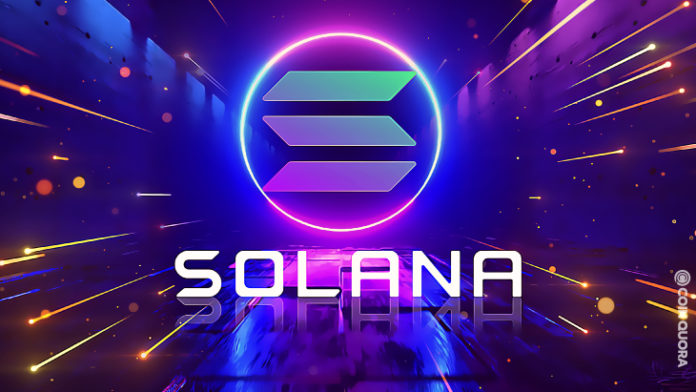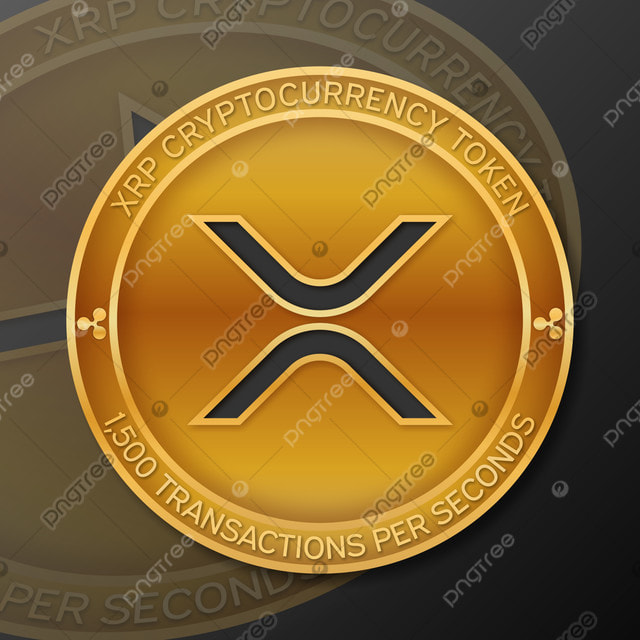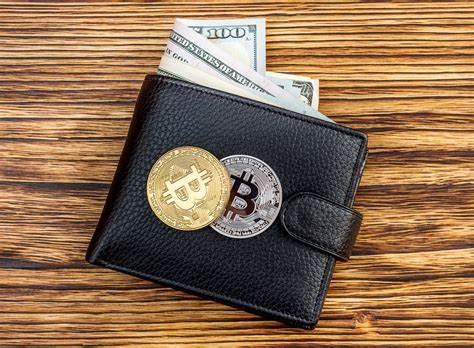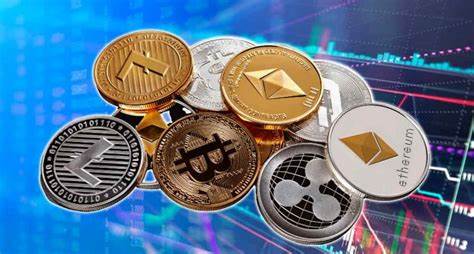In today’s digital age, cryptocurrencies have taken the financial world by storm. With the rise in popularity of digital assets like Bitcoin, Ethereum, and many others, the need for secure storage solutions has become paramount. This article will delve into the diverse landscape of crypto wallets, examining the different types available and highlighting their features, benefits, and potential drawbacks.
Table of Contents
- Introduction
- What is a Crypto Wallet?
- Hot Wallets: Keeping Your Crypto Accessible
- Understanding Hot Wallets
- Advantages of Hot Wallets
- Risks and Considerations
- Cold Wallets: Prioritizing Security
- Types of Cold Wallets
- Benefits of Cold Wallets
- Limitations and Trade-offs
- Software Wallets: Convenience Meets Control
- Exploring Software Wallets
- Pros of Software Wallets
- Cons to Keep in Mind
- Hardware Wallets: Tangible Security
- Unveiling Hardware Wallets
- Advantages of Hardware Wallets
- Points of Caution
- Paper Wallets: Old School Charm with Risks
- What are Paper Wallets?
- Benefits of Paper Wallets
- Vulnerabilities to Consider
- Mobile Wallets: Crypto on the Go
- Introducing Mobile Wallets
- Why Choose Mobile Wallets?
- Security Aspects
- Web Wallets: Navigating Through the Browser
- What You Should Know About Web Wallets
- When to Use Web Wallets
- Potential Security Risks
- Multi-Signature Wallets: Collaborative Control
- Understanding Multi-Signature Wallets
- Advantages in Security
- Complexity and Usability
- Custodial Wallets: Convenience with Trade-offs
- Exploring Custodial Wallets
- When Custodial Wallets Make Sense
- Trust and Autonomy Considerations
- Non-Custodial Wallets: You Hold the Keys
- The Concept of Non-Custodial Wallets
- Benefits of Non-Custodial Wallets
- User Responsibility and Backup
- Decentralized Wallets: P2P Empowerment
- What are Decentralized Wallets?
- Advantages of Decentralized Wallets
- Challenges on the Horizon
- Conclusion
Introduction
Cryptocurrencies have revolutionized the way we perceive and interact with money, offering decentralized, borderless, and secure digital transactions. As the popularity of cryptocurrencies continues to surge, understanding how to securely store and manage these digital assets becomes crucial. This article will take you on a journey through the diverse realm of crypto wallets, shedding light on various types and helping you make informed decisions about safeguarding your holdings.
What is a Crypto Wallet?
Before we dive into the specifics of different crypto wallets, let’s establish a fundamental understanding of what a crypto wallet actually is. In essence, a crypto wallet is a digital tool that allows you to store, receive, and send cryptocurrencies. Contrary to the physical wallets we carry in our pockets, crypto wallets don’t store your digital coins; rather, they secure your private keys, which are essential for accessing and managing your funds on the blockchain.
Hot Wallets: Keeping Your Crypto Accessible
Hot wallets are a category of crypto wallets that are connected to the internet. They offer quick and convenient access to your funds, making them suitable for frequent transactions and daily use. Let’s take a closer look at what sets hot wallets apart.
Understanding Hot Wallets
Hot wallets are like the digital equivalent of your physical wallet, readily available for transactions whenever you need them. These wallets can be further categorized into online wallets and mobile wallets.
Advantages of Hot Wallets
The main advantage of hot wallets is accessibility. Since they are connected to the internet, you can access your funds from various devices, making it easy to manage your crypto on the go.
Risks and Considerations
While hot wallets offer convenience, they come with certain risks that users should be aware of. Since they are connected to the internet, they are more vulnerable to hacking and unauthorized access compared to other types of wallets. It’s crucial to follow strict security practices, such as using strong and unique passwords, enabling two-factor authentication, and keeping your devices updated with the latest security patches.
Cold Wallets: Prioritizing Security
Cold wallets, on the other hand, prioritize security over quick accessibility. These wallets are not connected to the internet, making them immune to online threats. Let’s explore the world of cold wallets and their unique characteristics.
Types of Cold Wallets
Cold wallets can take various forms, including hardware wallets, paper wallets, and even brain wallets. Each type offers a different approach to offline storage.
Benefits of Cold Wallets
The primary advantage of cold wallets is their enhanced security. Since they are offline, they are immune to hacking and online attacks. Cold wallets are ideal for long-term storage of large amounts of cryptocurrencies that you don’t plan to use frequently.
Limitations and Trade-offs
While cold wallets provide unparalleled security, they also come with certain limitations. Accessing your funds stored in a cold wallet can be more time-consuming and less convenient compared to hot wallets. Additionally, if you lose access to your cold wallet, your funds could be irretrievable.
Software Wallets: Convenience Meets Control
Software wallets strike a balance between accessibility and security. They are applications or programs that you can install on your computer or smartphone. Let’s delve into the world of software wallets.
Exploring Software Wallets
Software wallets are user-friendly and versatile, catering to both beginners and experienced users. They can be further categorized into desktop wallets and mobile wallets.
Pros of Software Wallets
Software wallets offer a user-friendly interface, making them easy to set up and use. They provide more control over your private keys compared to custodial wallets, allowing you to have full ownership of your funds.
Cons to Keep in Mind
However, software wallets are still susceptible to online threats and malware. If your device becomes compromised, your funds could be at risk. Regularly updating your software and using strong security practices is essential to mitigate these risks.
Hardware Wallets: Tangible Security
Hardware wallets take a physical form and provide an added layer of security by keeping your private keys offline. Let’s explore how hardware wallets work and their advantages.
Unveiling Hardware Wallets
A hardware wallet is a physical device, often resembling a USB drive, that securely stores your private keys offline. This isolation from the internet makes them highly secure against online threats.
Advantages of Hardware Wallets
Hardware wallets offer top-notch security by keeping your private keys offline and away from potential hackers. They are also convenient to use – you can connect them to a computer when you need to make a transaction and then disconnect them, reducing the risk of exposure.
Points of Caution
It’s important to purchase hardware wallets from reputable sources to avoid counterfeit or compromised devices. Additionally, losing or damaging your hardware wallet could result in the loss of your funds, so keeping it safe and backed up is crucial.
Paper Wallets: Old School Charm with Risks
Paper wallets harken back to the early days of cryptocurrency and offer a unique way to store your private keys. Let’s explore the world of paper wallets and their pros and cons.
What are Paper Wallets?
A paper wallet is a physical document that contains your cryptocurrency public and private keys. It’s usually a piece of paper with QR codes that you can scan when you want to access your funds.
Benefits of Paper Wallets
One of the main advantages of paper wallets is their offline nature. They are immune to online attacks and hacking since they are completely offline. Paper wallets are also relatively inexpensive and easy to create.
Vulnerabilities to Consider
However, paper wallets come with significant risks. If the paper gets lost, damaged, or stolen, you could lose access to your funds forever. Additionally, the process of generating a paper wallet securely can be complex, and any mistakes could lead to compromised security.
Mobile Wallets: Crypto on the Go
Mobile wallets bring the world of cryptocurrencies to your fingertips, allowing you to manage your funds anytime, anywhere. Let’s take a closer look at the benefits and considerations of mobile wallets.
Introducing Mobile Wallets
Mobile wallets are applications that you can install on your smartphone, enabling you to access and manage your cryptocurrencies on the go. They provide a convenient and user-friendly way to interact with your digital assets.
Why Choose Mobile Wallets?
Mobile wallets offer the convenience of quick and easy access to your funds. They are suitable for everyday use and are great for making in-store purchases using cryptocurrencies.
Security Aspects
While mobile wallets offer convenience, they are still connected to the internet, making them potentially vulnerable to online attacks. To enhance security, it’s essential to use strong passwords, enable biometric authentication, and avoid storing large amounts of cryptocurrencies on your mobile device.
Web Wallets: Navigating Through the Browser
Web wallets provide a versatile way to access your cryptocurrencies directly through your browser. Let’s explore the features and potential risks associated with web wallets.
What You Should Know About Web Wallets
Web wallets are online platforms that allow you to access and manage your cryptocurrencies through a web browser. They provide a user-friendly interface and don’t require any downloads or installations.
When to Use Web Wallets
Web wallets are convenient for users who want easy access to their funds from any device with an internet connection. They are suitable for day-to-day transactions and managing smaller amounts of cryptocurrencies.
Potential Security Risks
However, using web wallets comes with certain security risks. Since your private keys are stored online, you are reliant on the platform’s security measures. If the platform experiences a breach, your funds could be at risk. It’s crucial to choose a reputable and secure web wallet provider and enable all available security features.
Multi-Signature Wallets: Collaborative Control
Multi-signature wallets offer an innovative approach to security by requiring multiple signatures to authorize a transaction. Let’s delve into how multi-signature wallets work and their advantages.
Understanding Multi-Signature Wallets
A multi-signature wallet, often referred to as a multisig wallet, requires the authorization of multiple private keys to initiate a transaction. For example, a wallet might require two out of three private keys to sign off on a transaction.
Advantages in Security
Multi-signature wallets enhance security by adding an extra layer of authentication. This makes them particularly suitable for businesses, organizations, and situations where multiple parties need to approve transactions.
Complexity and Usability
However, multi-signature wallets can be more complex to set up and use compared to traditional wallets. Coordinating multiple signatures can also introduce potential points of failure or confusion. It’s important to carefully manage the private keys and backup information for each signer.
Custodial Wallets: Convenience with Trade-offs
Custodial wallets offer a convenient solution for those who prioritize ease of use and accessibility. However, they come with certain trade-offs and considerations. Let’s explore custodial wallets in detail.
Exploring Custodial Wallets
Custodial wallets, also known as hosted wallets, are wallets where a third-party service provider manages your private keys on your behalf. This means you don’t have direct control over your keys.
Sense
Custodial wallets are particularly useful for beginners or individuals who are less tech-savvy. They provide an easy way to get started with cryptocurrencies without the need to manage complex private keys.
Trust and Autonomy Considerations
While custodial wallets offer convenience, they also introduce an element of trust. Since the service provider controls your private keys, you are reliant on their security practices. Additionally, using a custodial wallet means sacrificing some level of autonomy and control over your funds. It’s essential to choose a reputable and trustworthy custodial service with a strong track record in security.
Non-Custodial Wallets: You Hold the Keys
Non-custodial wallets empower users with full control over their private keys and funds. Let’s explore the concept of non-custodial wallets and their benefits.
The Concept of Non-Custodial Wallets
Non-custodial wallets, also known as self-custody wallets, put you in complete control of your private keys. This means you have full ownership of your funds and can access and manage them independently.
Benefits of Non-Custodial Wallets
Non-custodial wallets offer enhanced security and autonomy. You are not reliant on a third-party service, reducing the risk of hacks or breaches. You have the freedom to choose how and where you store your private keys, giving you complete control over your assets.
User Responsibility and Backup
However, non-custodial wallets come with a higher level of responsibility. If you lose access to your private keys, there is no way to recover your funds. It’s crucial to create secure backups and follow best practices for key management to avoid losing your assets.
Decentralized Wallets: P2P Empowerment
Decentralized wallets align with the core principles of cryptocurrencies by offering peer-to-peer empowerment. Let’s explore the world of decentralized wallets and their significance.
What are Decentralized Wallets?
Decentralized wallets operate on blockchain networks and enable users to interact directly with the blockchain. They eliminate the need for intermediaries, providing a trustless and permissionless way to manage your cryptocurrencies.
Advantages of Decentralized Wallets
Decentralized wallets offer unmatched security and censorship resistance. Since you control your private keys and interact directly with the blockchain, there is no single point of failure or vulnerability. This aligns with the philosophy of decentralization that underpins cryptocurrencies.
Challenges on the Horizon
While decentralized wallets offer compelling advantages, they also come with challenges. The user experience can sometimes be less user-friendly compared to centralized options, and technical knowledge may be required to use certain features. Additionally, the responsibility of securing your private keys falls entirely on you.
Conclusion
In the ever-evolving world of cryptocurrencies, choosing the right type of wallet is crucial to safeguarding your digital assets. Whether you prioritize accessibility, security, or full control, there’s a crypto wallet type that suits your needs. From hot wallets offering quick access to cold wallets providing ironclad security, each type comes with its own set of advantages and considerations. Ultimately, making an informed decision about your crypto wallet will ensure that you can navigate the exciting realm of cryptocurrencies with confidence.
FAQs
1. Are hardware wallets compatible with all cryptocurrencies? Hardware wallets support a wide range of cryptocurrencies, but it’s essential to check compatibility before purchasing.
2. Can I use the same wallet for multiple cryptocurrencies? Some wallets support multiple cryptocurrencies, while others are designed for specific coins. Research the wallet’s capabilities before use.
3. What happens if I lose my hardware wallet? Losing your hardware wallet could lead to a loss of access to your funds. It’s crucial to have a secure backup of your recovery phrase.
4. How do multi-signature wallets enhance security? Multi-signature wallets require multiple private keys to authorize transactions, adding an extra layer of protection against unauthorized access.
5. What’s the difference between custodial and non-custodial wallets? Custodial wallets are managed by third parties, while non-custodial wallets give you full control over your private keys and funds.
Advertisement











